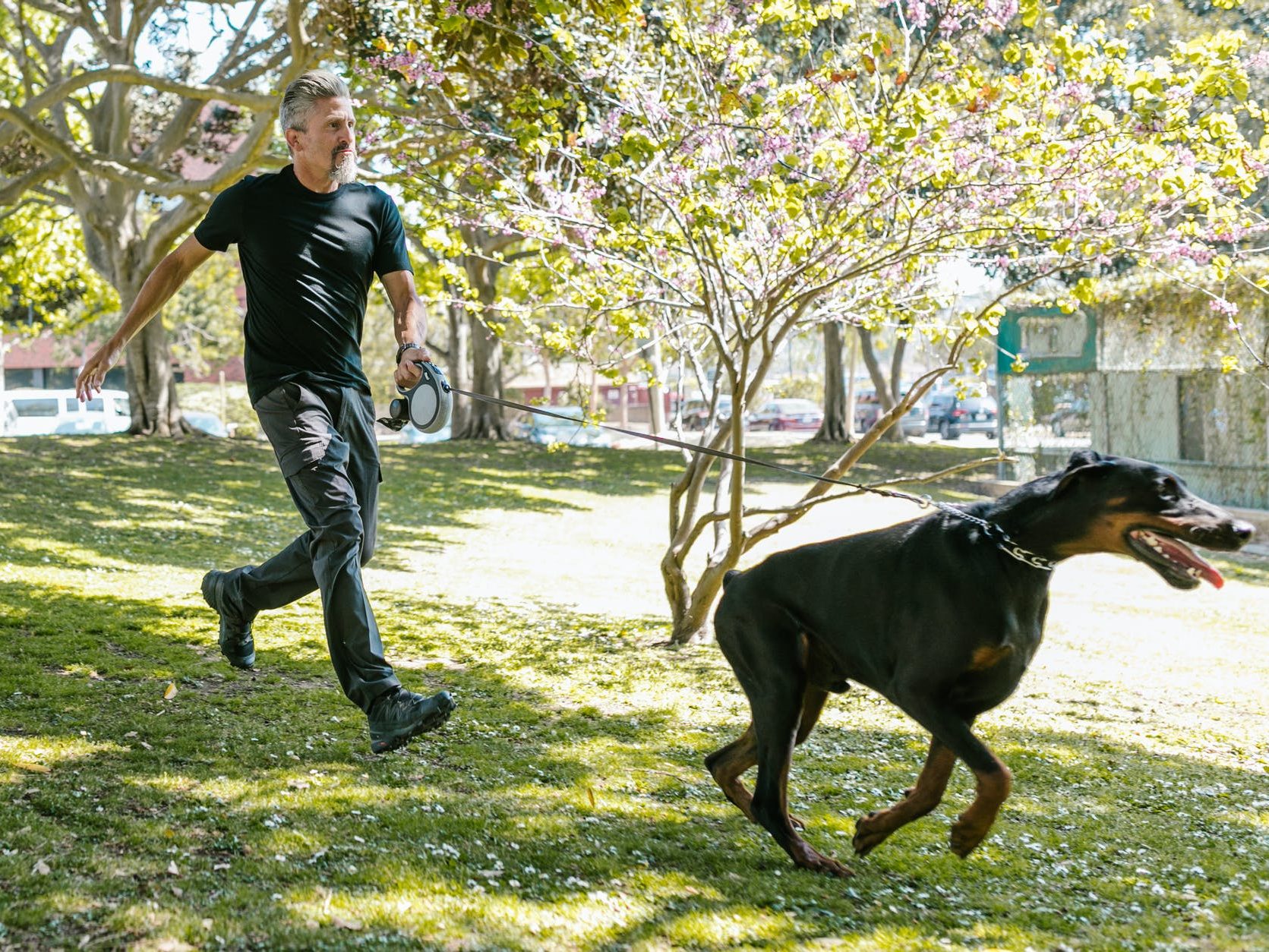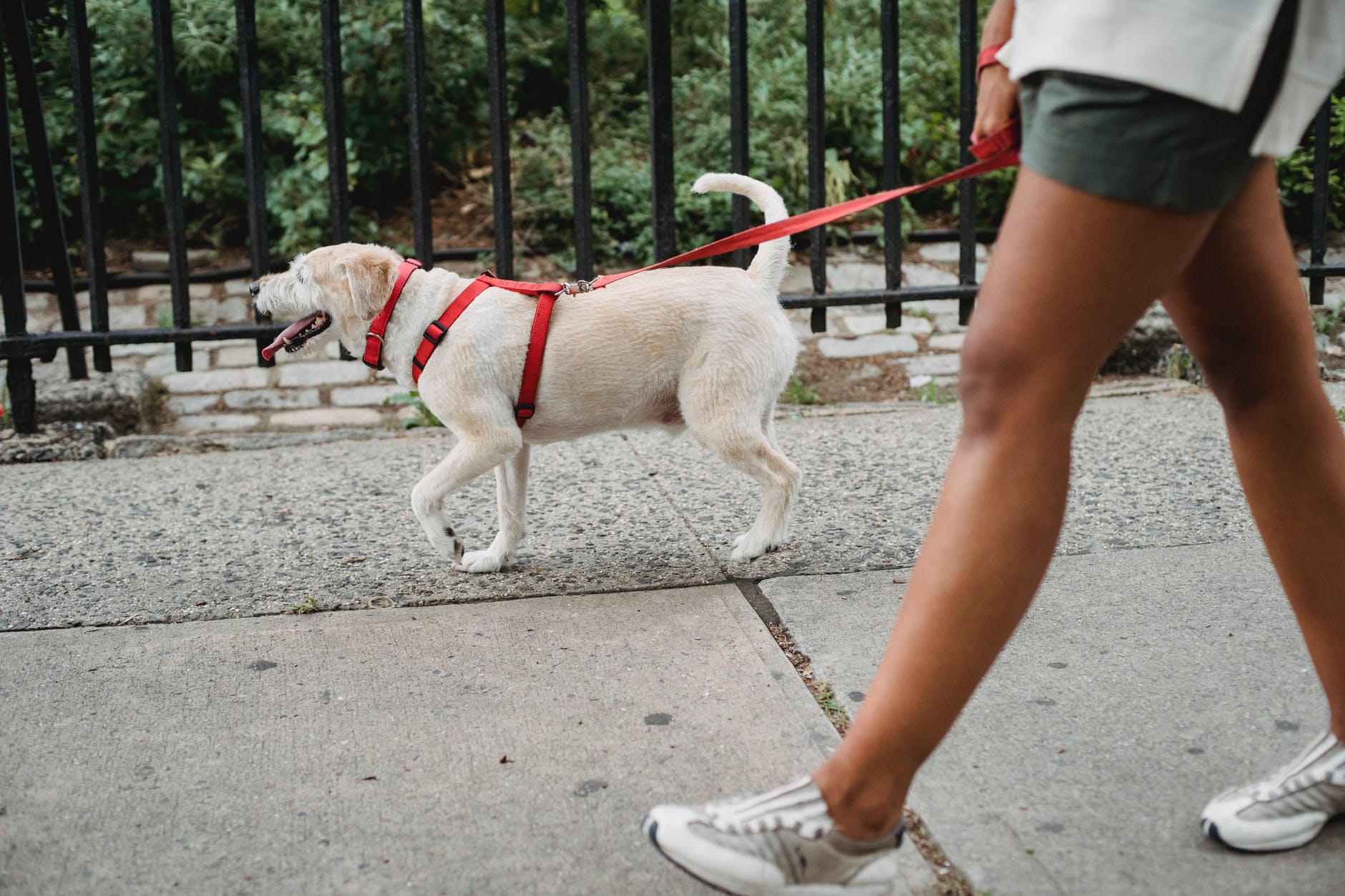Let’s get this out of the way: in the debate of collar vs harness, I believe – as a professional dog trainer – that harnesses are clearly a better option than collars.
Yes, dogs have worn collars for millennia, but does that make it right?
At this point in my life all I can think about when I see a poor dog with a chain around his neck is: SLAVE!
Of course, it wouldn’t be fair if I didn’t recognize that those kinds of perceptions are subjective. But do you know what isn’t subjective?
Your dog’s health.
Collars can cause injuries.

Whether it’s a human pulling on a leash to control a dog, or a dog pulling on a leash to go where they want, when either of those things happens while a collar is being worn, there are serious health implications.This is true for so called also for “limited choke” or Martingale collars. Pinch collars or chains should frankly be outlawed, like they are in Europe.
I cringe when I see a little puppy being on a tight leash and seeing what the collar does to their neck: choking and putting undue pressure on the neck and spine.
Stop to think for a second what organs lie in the neck! When a leash pulls back on a collar, there are blood vessels being constricted, pressure on the thyroid gland, potential deforming of the base of the tongue, and possibly even nerve damage.
That is just not acceptable.
But don’t harnesses encourage pulling?
There’s a persistent (but inaccurate) belief that, because of their inherent opposition reflex, harnesses encourage dogs to pull against the leash as they lean into the harness, kind of like sled dogs do.
That’s always been a mistake of confusing correlation with causation. Sled dogs pull on their harnesses because they’re taught to do so, not because the harness naturally encourages that behavior.
In reality, a dog who wants to pull is going to do so whether they’re wearing a collar or a harness. The difference is that harnesses don’t have a high risk of causing injury during pulling (which is precisely why sled dogs are equipped with harnesses rather than collars).
A leash is not a steering mechanism.

Let’s be clear: a leash should be a safety tool, not a steering mechanism. Yanking and leash-snapping only result in more yanking and leash-snapping. Yanking and leash snapping is just cruel.
The problem is that, all too often, a leash function as a steering mechanism, whether it’s the dog attempting to steer the human by pulling, or the human attempting to pull the dog along or back.
In an ideal world, that pulling action wouldn’t happen. But since it does happen, it’s better than the force is spread over the dog’s body through a harness rather than concentrated entirely on the neck with a collar.
Size, age, and breed don’t really matter.
I often see these factors causing confusion or being used to justify continued collar use. I understand the confusion: dogs come in such a broad range of shapes and sizes that it’s easy to envision a puppy’s needs being different from those of a fully grown dog, or the needs of a labrador being different from those of a terrier.
But while there might be added considerations based on these factors – like how to manage long fur or where to attach the leash – none of them change the conclusion that harnesses are preferable over collars.
Young dog, old dog, tall dog, short dog – when it comes to collar versus harness, all dogs are better off with a harness.
Focus on health and behavior.

For your dog’s health and wellbeing, choose a well-fitting harness – one that does not constrict your dog’s movement and helps your dog to move freely.
A Y-shaped harness is really well-suited for this. The front of the harness lines up with the breast-bone and the Y shape keeps the shoulder joints free so the dog can have natural reach and drive.
The leash attaches on the back – and that’s much, much more than an aesthetic change. When it’s attached at that point, the dog almost feels like there is no leash. That’s hugely important because it greatly minimizes the so-called “leash aggression factor” which is often caused by a dog feeling like they cannot move away from fear triggers.
And what about the pulling and lagging you ask? That’s where teaching enters the picture: use a long leash and teach the dog to love the loose leash!
Collar vs Harness: The Last Word
So should you go and throw out all of your dog’s collars? Certainly not! There’s a purpose for collars in the lives of our dogs, and it’s as a place for their identification to go.
Even though many dogs have microchips for identification, it never hurts to have a backup plan – especially one that can easily be read and used by anyone to help reunite you with your dog in case of an accident.
But whenever you’re planning to walk, hike, or bike with your dog make sure you’re reaching for a harness, not a collar. Sure, it takes a few more seconds to put on, but every one of them is worth it to keep your dog happier and healthier.
If you have any questions about teaching your dog to walk well while wearing a harness or about good harness and leash choices as well as sizing please don’t hesitate to reach out!















